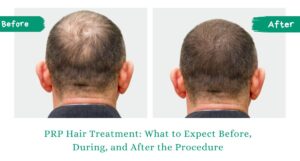Here we like to discuss some true facts of hair transplant.
Hair transplant is a surgical procedure performed commonly all over the world to restore lost hair and treat baldness. The hair transplant is routinely performed under local anesthesia (your head is numb but you are awake). The hair transplant has broadly 3 steps. The first step is harvesting of grafts which can be done either by strip (FUT) or graft by graft (FUE). The second step is preparation of recepient site (bald area). The surgeon and the patient should design hairline and transplant area wisely based on age, looks, hair quality, grafts and other factors to acheive satisfactory results. The final step is transplanting grafts. Hair transplant is safe and has quiet good success rate. The side effects of hair transplant are also very less. If done in proper manner hair transplant can give very good results. The hair transplant has become quiet common procedure with several celebrities and bollywood actors undergoing hair transplant surgery. Routinely it takes around 3-6 months for hair to grow back after hair transplant but it can vary person to person. One can see increased hair loss or transplanted hair grafts falling out after hair transplant which is common phenomenon due to shedding of hair after the surgery. Several doctors claim that no medicienes are required after hair transplant, however you may need necessary DHT blockers and medicines to control your natural hair loss (as the original hair present on scalp may tend to fall out). The hair transplant hair are considered permanent as they are resistant to DHT effect and hence the results can be long lasting.
FUE vs FUT
The most common dilemma is the difference between two most common hair transplant techniques and which is better. The simple answer is both techniques FUE and FUT are good. The FUT or strip hair transplant can provide higher number of grafts and better quality of fat and tissues around grafts but can give linear scar in donor area. Good magnification and proper handling, manipulation of strip is very important for success of follicular unit transplantation (FUT). To overcome linear scarring and other disadvantages of FUT, follicular unit extraction (FUE) has been developed with equally satisfactory results. In FUE, the surgeons takes out small hair roots or grafts individually with specialized machine and punches. This techniques avoid cutting of big strip from back of head, linear scar and need for stitches.
Care after hair transplant
Like any other surgery, hair transplant require post operative care. Your surgeon will give you appropriate instructions. You should sleep on your back and avoid any pressure or trauma on grafts. Regular spray or wetting of grafts is required to keep grafts viable. the scabs or blood clots after hair transplant should not be scraped forcefully. Avoid alcohol, smoking, excessive excercise or stress. Routine pain killers and antibiotics can be advised to reduce pain after hair transplant.
Side Effects or Complications of Hair Transplant
Hair transplant surgery can have common complications such as pain, bleeding, swelling on head and face, numbness, infection, altered consciousness, cyst, hair shedding etc. The doctor can evaluate you at follow up visits and will give you appropriate treatment for any kind of complaints.
Medicines and other Treatment after Hair Transplant
The hair transplant specialist can advise you appropriate treatment such as minoxidil, medicines, prp, dermaroller, etc. after hair transplant to enhance and maintain your results.
Hair Transplant v/s Wig
Another important comparision is if i should go for hair transplant or hair weaving or wig (vig). Hair transplant is a surgical procedure. The hair after transplant will grow and age in natural way. The hair weaving or wig on other hand is an artifical prosthetic designed for your head. The wig need regular maintenance and care.
Hair transplant is safe and effective if done correctly. Always discuss in detail with your hair transplant expert before undergoing hair transplant. The biggest complications of hair transplant are overexpectations and unrealistic promises.




